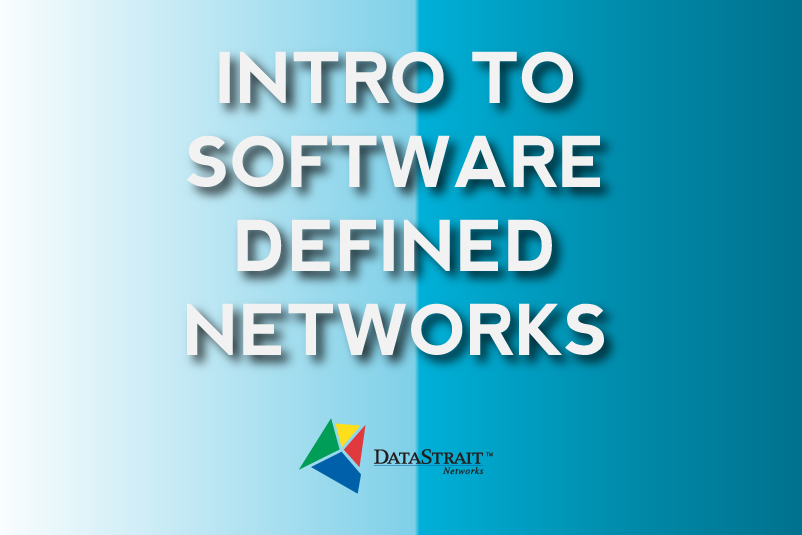Finding a network solution that satisfies all the requirements you have for your organization can seem like an impossible task. Whether your company is building a brand new data center or reorganizing the structure of an existing office, your network needs to be easily manageable and scalable from day one. When you know that your current hardware architecture is just not up to the task, so what can you do? Your optimal solution may be software defined networks.
The concepts behind software defined networks were created to deal with a variety of challenges related to the explosion of cloud services, virtualization, and mobile devices. The existing hierarchical structure worked in a time where one client communicating with one server was the dominant form of network communication, but that has all changed. Modern network traffic bounces between a wide range of places before reaching an end user, and static architecture can't handle the complexity. Software defined networks can.
The Components of Software Defined Networks
To solve the problems created by modern traffic patterns and huge bandwidth demands, Software defined networks offer centralized network intelligence through a virtual connectivity fabric that enables dynamic management of networks through software. There are several components within the architecture of software defined networks that will allow this capability:
Applications
In software defined networks, these are any programs that explicitly and programmatically tell the controller what the desired network behavior should be.
Controller
This logically centralized entity manages the flow control for the network. It is typically contained on a server and tells hardware where to send packets.
Datapath
The datapath is a logical network device that expresses its data processing and forwarding capabilities. In software defined networks, multiple data paths can be implemented in a single physical network element or a single datapath can control multiple physical network elements.
Control to Data-Plane Interface
The CDPI is the interface between the controller and the datapath that provides control of forwarding capabilities, event notification, and statistics reporting.
Northbound Interfaces
These are interfaces between applications and controllers in software defined networks that can provide abstract network views at any function level and across different sets of functionality.
Not all software defined networks have the same architecture. Depending on the vendor you choose, you're likely to find a variety of enhanced features designed to satisfy your unique requirements.
https://www.networkcomputing.com/sites/default/files/resources/nwc/1-intro_113.jpg
Key Benefits of Software Defined Networks
When you have the network architecture in place, what can you do with it? Software defined networks are designed to provide:
Direct Programming
Control of the network can be directly programmed because it is no longer coupled with forwarding functions.
Agility
Abstracting control means you can adjust network-wide traffic flow to adapt to changing conditions in your environment.
Centralized Management
Through software, you get a global view of your network where you can control single, logical switches.
Programmatic Configuration
As a network engineer, you can optimize, manage, secure, and configure software defined networks quickly through dynamic, automated programs.
Software defined networks enable you to create custom applications and services that meet the unique needs of your particular business. Additionally, you can change things as the demands of your organization change without having to incur sizeable additional project costs.
Real World Implementation
Software defined networks have some impressive benefits on paper, but without real-world examples of implementation, they may not mean much to you. In December of 2016, Fiber Mountain Inc. announced that they would be partnering with Legrand to simplify the network infrastructure of new or existing customers using its intelligent connectivity products. In a press release, representatives from Legrand stated that Fiber Mountain's software defined network solutions would help them provide the ultimate in:
Scalability
Error-proofing
Remote, real-time visibility
Automated reconfiguration
Optimized power and cooling
The innovations provided by software defined networks are currently bringing significant savings, enhanced asset management, and increased functionality to Fiber Mountain and Legrand customers.
Switching to Software Defined Networks
In a business environment where you can't predict the speed, availability, or bandwidth needs of your network, sticking with your old network infrastructure is a recipe for disaster. Software defined networks give you the power to adapt to the complex and ever-changing nature of your company's communications. When new high-speed cables connect to your data center or another facility, implementing software defined networks makes handling traffic reliably and efficiently possible.
Implementing brand new infrastructure like software defined networks into your company can seem like a daunting task, but there is help available for the design and construction of this innovative network. This assistance enables professionals like you to bring software defined networks into your organization even if you don't currently have hands-on training and experience. You'll have the resources to quickly learn how the architecture works and how to take advantage of all its features.

